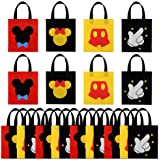Title Page:
- The title of your booklet.
- Your name or authorship details.
Table of Contents:
- List of sections or chapters with page numbers.
Introduction:
- Briefly explain the purpose of the booklet and what readers can expect.
Chapter 1: Fundamental Concepts:
- Highlight key concepts or foundational knowledge related to the topic of your booklet.
Chapter 2: Core Principles:
- Explore the main principles or ideas that form the basis of the subject matter.
Chapter 3: Key Terms and Definitions:
- Define essential terms and concepts that readers should be familiar with.
Chapter 4: Practical Tips:
- Provide actionable advice or tips that readers can apply in real-life situations.
Chapter 5: Common Mistakes to Avoid:
- Discuss common misconceptions or errors people might make and explain how to avoid them.
Chapter 6: Further Resources:
- Recommend books, websites, videos, or other sources where readers can delve deeper into the topic.
Chapter 7: Conclusion:
- Sum up the main points and encourage readers to continue learning and exploring.
Appendix:
- Include any additional charts, diagrams, or supplementary material that enhances understanding.
Acknowledgments:
- Mention any individuals or resources you’d like to acknowledge for their contributions.
Remember that the key to a successful compact guide is to keep the content concise, relevant, and easy to understand. Use clear and straightforward language, and consider using bullet points, lists, and graphics to convey information effectively.
Before finalizing your booklet, be sure to proofread for any errors and ensure the information is accurate and up-to-date. Your booklet can be in printed form or a digital format, depending on your preferences and distribution methods.


















